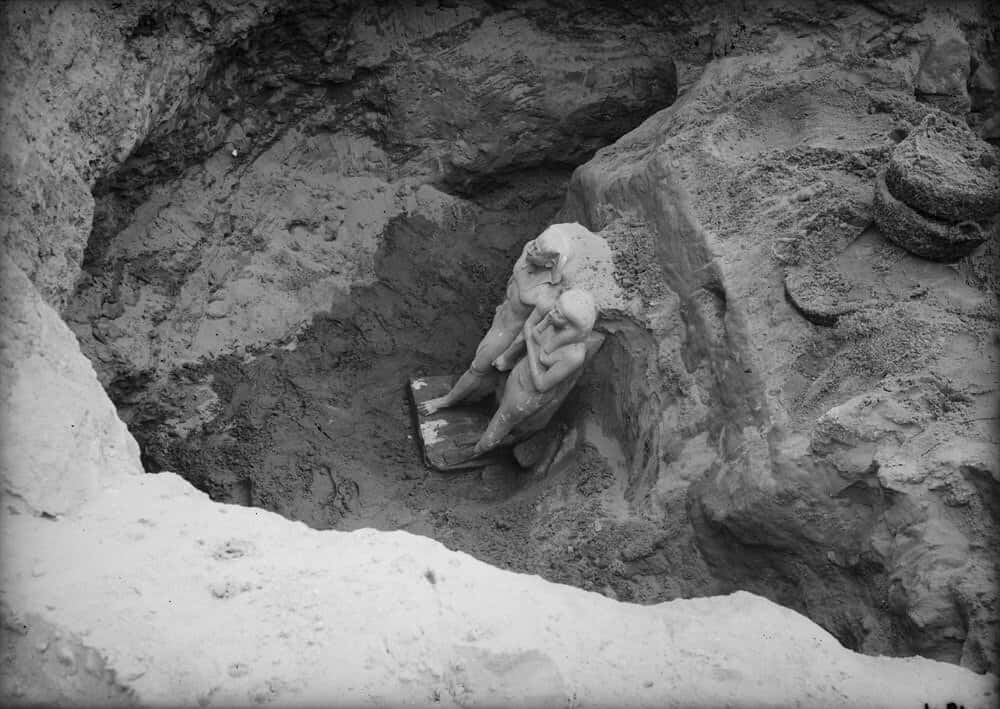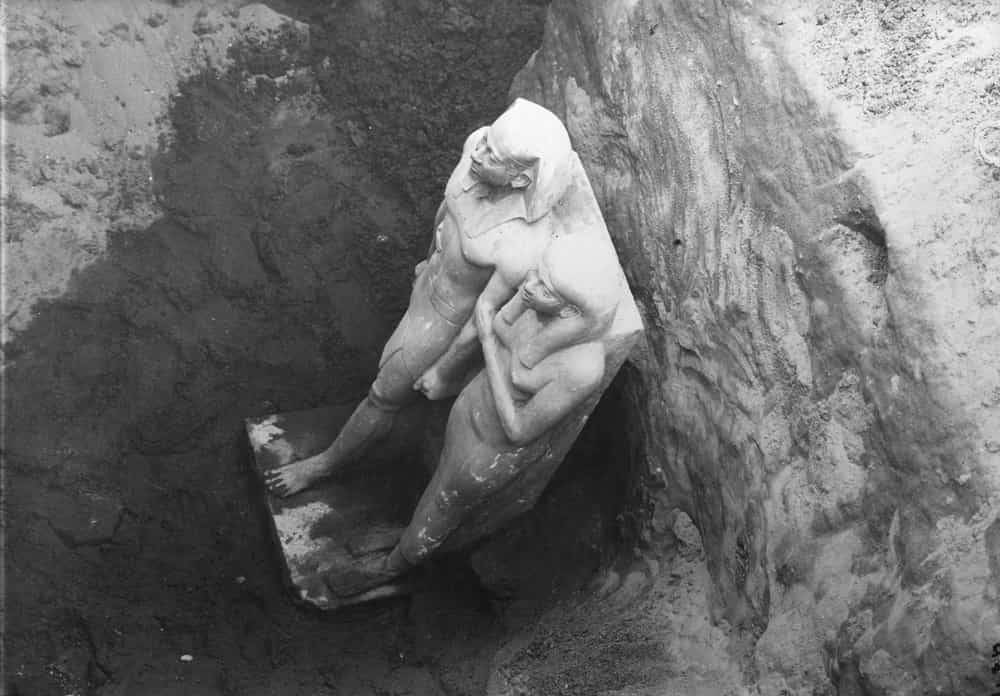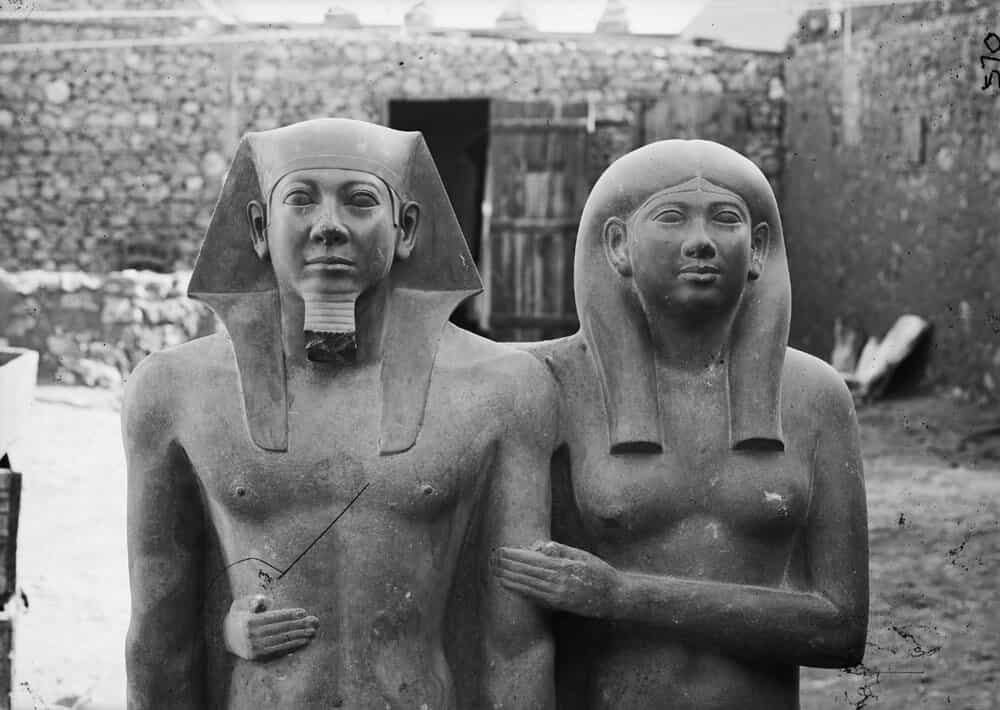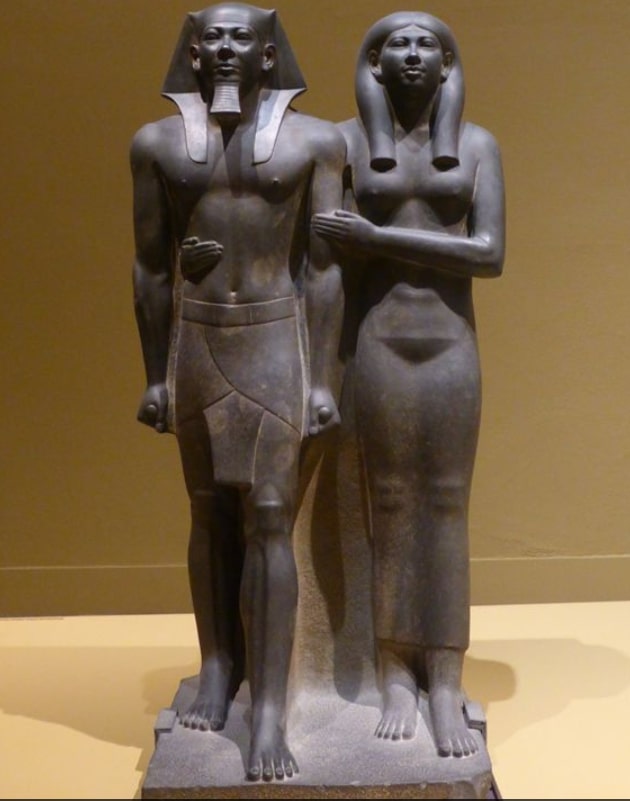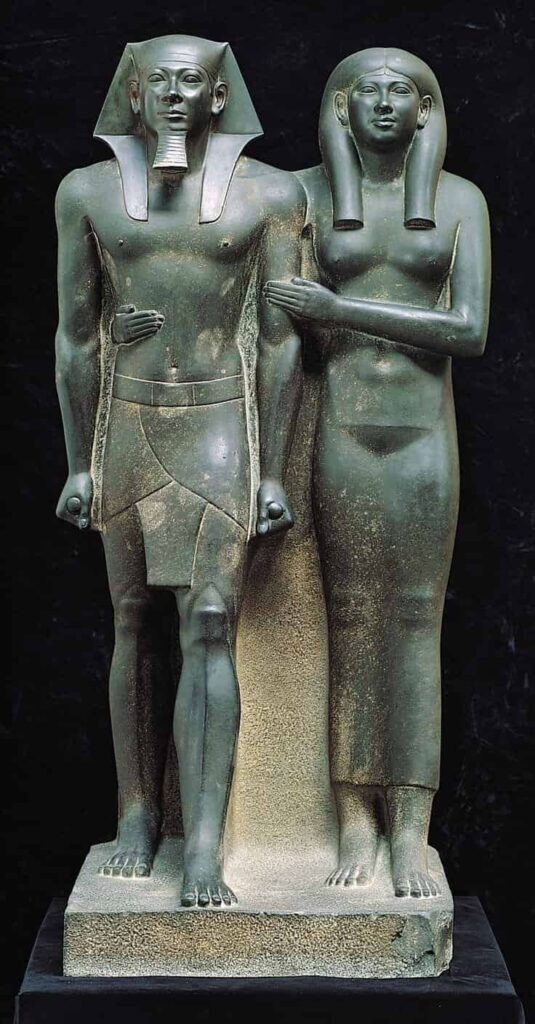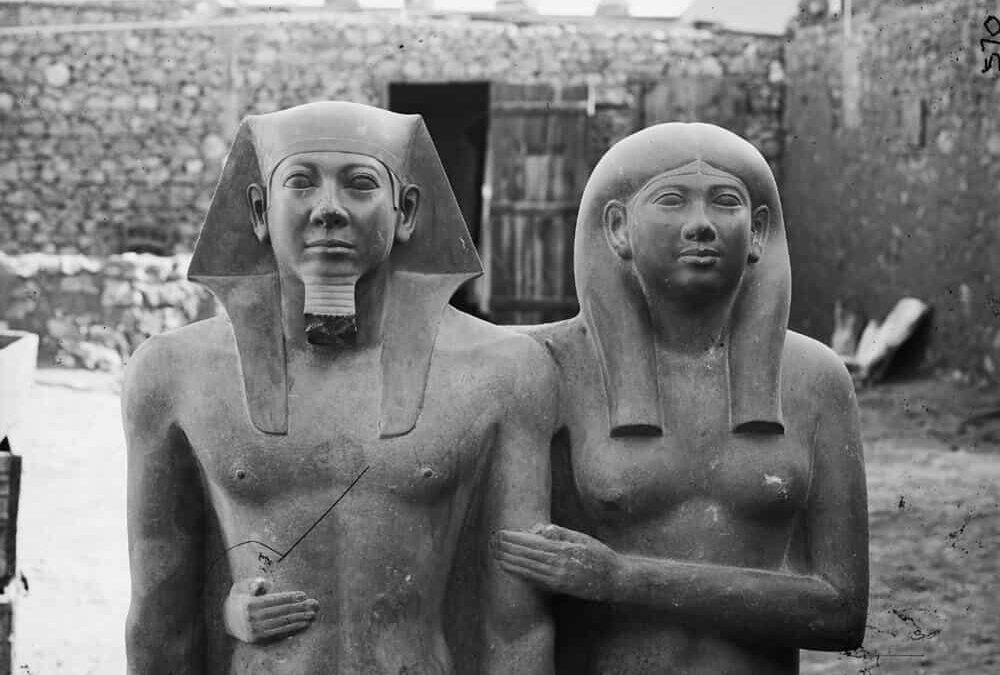Serene ethereal beauty, raw royal power, and evidence of artistic virtuosity have rarely been simultaneously captured as well as in this breathtaking, nearly life-size statue of the pharaoh Menkaure and a queen from c. 2490–2472 B.C
Smooth as silk, the meticulously finished surface of the dark stone captures the physical ideals of the time and creates a sense of eternity and immortality even today.
The two figures stand side-by-side, gazing into eternity. He represents the epitome of kingship and the ideal human male form. She is the ideal female.
Menkaure wears the nemes on his head, a long artificial beard, and a wraparound kilt with central tab, all of which identify him as king. In his hand he clasps what may be abbreviated forms of the symbols of his office.
His high cheekbones, bulbous nose, slight furrows running diagonally from his nose to the corners of his mouth, and lower lip thrust out in a slight pout, may be seen on her as well, although her face has a feminine fleshiness, which his lacks. Traces of red paint remain on his face and black paint on her wig.
His broad shoulders, taut torso, and muscular arms and legs, all modeled with subtlety and restraint, convey a latent strength.
In contrast, her narrow shoulders and slim body, whose contours are apparent under her tight-fitting sheath dress, represent the Egyptian ideal of femininity.
As is standard for sculptures of Egyptian men, his left foot is advanced, although all his weight remains on the right foot.
Typically, Egyptian females are shown with both feet together, but here, the left foot is shown slightly forward. Although they stand together sharing a common base and back slab, and she embraces him, they remain aloof and share no emotion, either with the viewer or each other.
Statue of King Menkaure and his queen Khamerernebty II
Menkaure: The pharaoh of the 4th dynasty of the Old Kingdom of Egypt, son of Khafre and grandson of Khufu.
The statue was found on January 10, 1910, during excavations carried out by members of Harvard University, in the temple of the Pyramid of Menkaure, near the Egyptian town of Giza.
Source: Museum of Fine Arts, Boston

